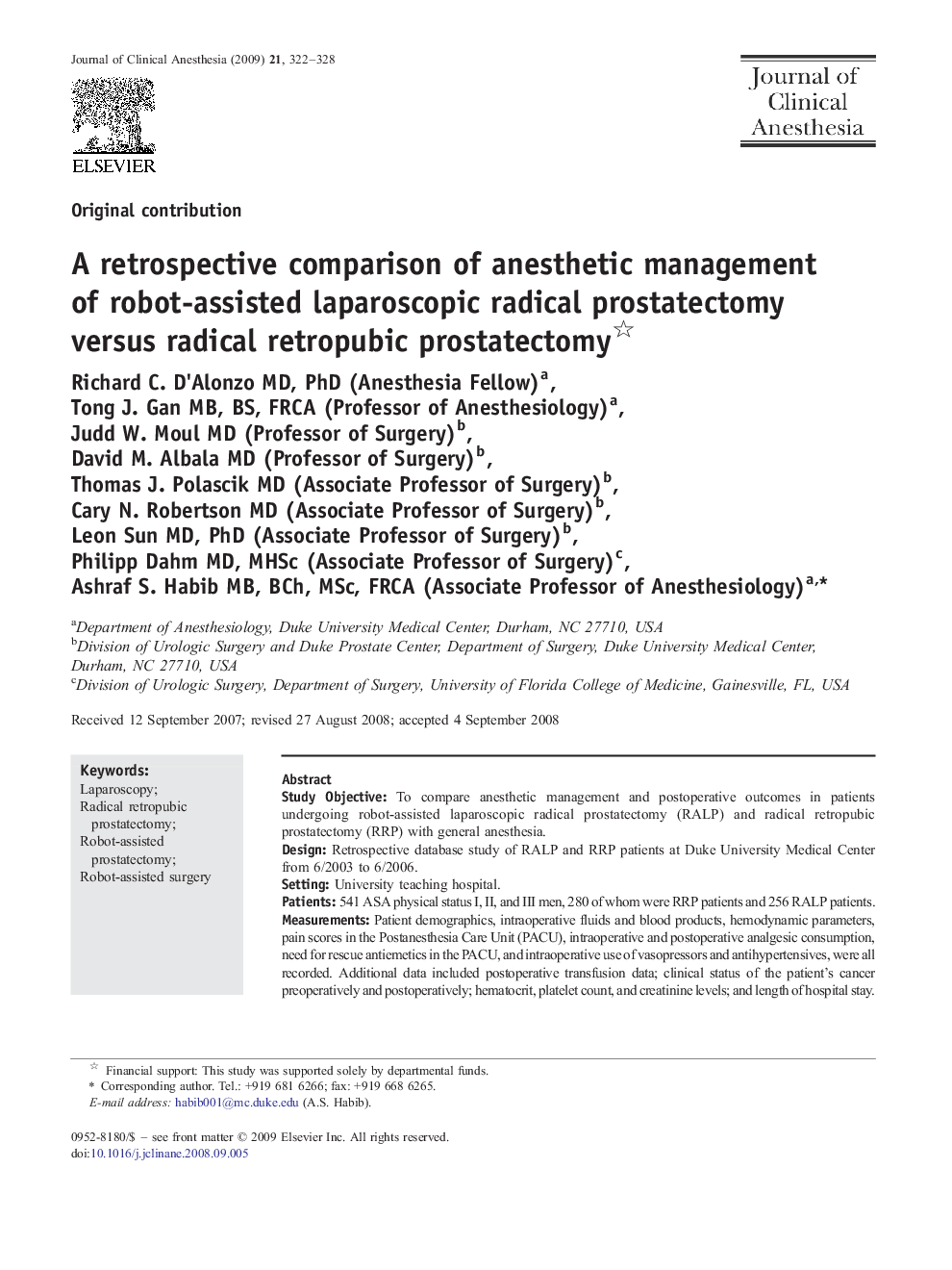| Article ID | Journal | Published Year | Pages | File Type |
|---|---|---|---|---|
| 2763547 | Journal of Clinical Anesthesia | 2009 | 7 Pages |
Study ObjectiveTo compare anesthetic management and postoperative outcomes in patients undergoing robot-assisted laparoscopic radical prostatectomy (RALP) and radical retropubic prostatectomy (RRP) with general anesthesia.DesignRetrospective database study of RALP and RRP patients at Duke University Medical Center from 6/2003 to 6/2006.SettingUniversity teaching hospital.Patients541 ASA physical status I, II, and III men, 280 of whom were RRP patients and 256 RALP patients.MeasurementsPatient demographics, intraoperative fluids and blood products, hemodynamic parameters, pain scores in the Postanesthesia Care Unit (PACU), intraoperative and postoperative analgesic consumption, need for rescue antiemetics in the PACU, and intraoperative use of vasopressors and antihypertensives, were all recorded. Additional data included postoperative transfusion data; clinical status of the patient's cancer preoperatively and postoperatively; hematocrit, platelet count, and creatinine levels; and length of hospital stay.Main ResultsEstimated blood loss (EBL) was higher for RRP than RALP patients (mean ± SD; 1,087 ± 853 mL vs. 287 ± 317 mL; P < 0.0001). Likewise, 24% of RRP patients received red blood cell (RBC) transfusions intraoperatively, compared with 0.4% RALP patients (P < 0.0001). Intraoperatively, RALP patients received more antihypertensive agents (37% vs. 21%; P < 0.0001), and fewer vasopressors (63% vs. 78%; P < 0.0001) than did RRP patients. The two groups had similar morphine-equivalent opioid use intraoperatively, but in the PACU, RALP patients required fewer morphine equivalents (mean ± SD; 11.4 ± 7.7 mg vs. 14.9 ± 9.8 mg; P < 0.0001). The RALP patients had longer surgical times (mean ± SD; 296 ± 76 vs.193 ± 69 min; P < 0.0001) but shorter PACU stays (mean ± SD; 113 ± 55 min vs. 143 ± 58 min; P < 0.0001) and shorter hospital stays (mean ± SD; 44 ± 77 hrs vs. 56 ± 26 hrs; P = 0.009).ConclusionsDuration of surgery was greater with RALP, but it was associated with less EBL, fewer transfusions of blood products, and shorter PACU and hospital stays.
